Flat Mite (Brevipalpus sp.) Identification
- Flat, diamond shaped
- Yellow to reddish orange in color
- Females may have a black “H” marking with green and dark spots
- Approximately 0.2 mm; males are smaller than females
- Can be found on both sides of leaf, stems, and fruit
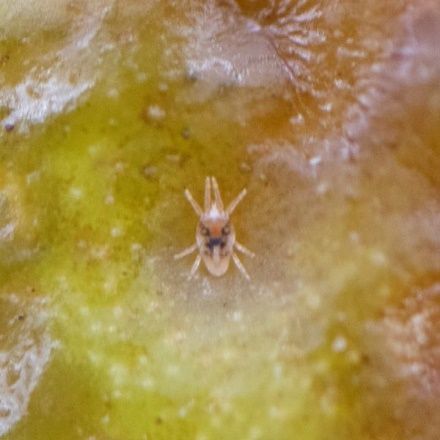
Credit: T. R. Weeks, UF/IFAS
Flat Mite (Brevipalpus sp.) Feeding Damage
- Leaves circular yellow spots on fruit from feeding (pictured)
- Can vector citrus leprosis virus when the virus is present in the system
- When populations are very high, leaf damage may occur
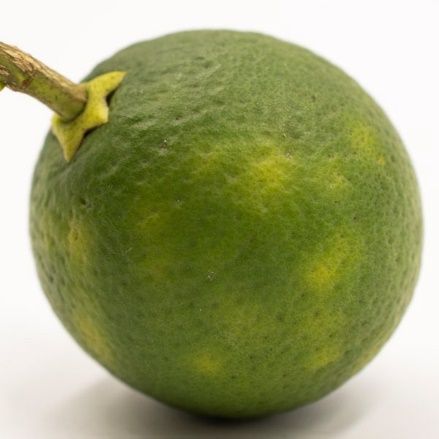
Credit: T. R. Weeks, UF/IFAS
Texas Citrus Mite Identification
- Females (left) are a broad oval shape; males (right) are slender oval shape
- Males have longer legs than females
- Approximately 0.5 mm long
- Often located on upper side of leaf and move from the inner leaf to the outer leaf

Credit: University of Arizona
Texas Citrus Mite Feeding Damage
- Leaves will look speckled (stippling)
- High populations may cause leaf and fruit drop
- When leaves drop, the leaf petiole stays intact on tree
- Damage progresses from top of tree, then downward
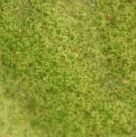
Credit: University of Texas
Citrus Rust Mite Identification
- Wedge shaped, longer than wide
- Light yellow in color
- 0.15 mm long
- Feed on both fruit and leaves, but prefer fruit
- Often found on outer canopy fruit
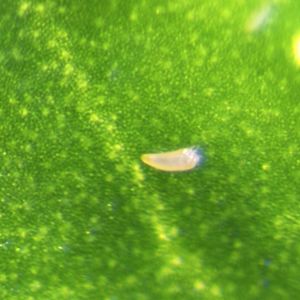
Credit: E. Demard, UF/IFAS
Citrus Rust Mite Feeding Damage
- Leaves and fruit have smooth, dark-brown spots
- Extreme damage causes bronzing (pictured) on fruit; bronzing also occurs on leaves
- May cause smaller fruit size
- Most often found on outer canopy away from direct sunlight
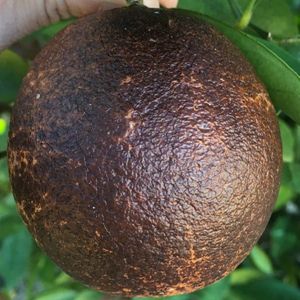
Credit: J. D. Burrow, UF/IFAS
Broad Mite Identification
- Oval shaped
- Light yellow to reddish or brownish yellow, may be green
- Females have a stripe, whereas males do not
- Females are 0.2 mm long and males are 0.11 mm long; males move faster
- Feed on unhardened leaves and fruit
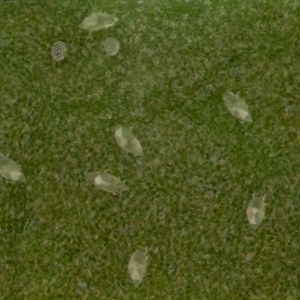
Credit: L. Buss, UF/IFAS
Broad Mite Feeding Damage
- Leaf bronzing
- Leaf curling unevenly distributed on leaf, no pattern
- Feeding damage same on various plants (dogwood pictured)
- Rind damage on developing fruit
- Common greenhouse pest
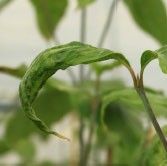
Credit: Tennessee State University
Citrus Red Mite Identification
- Females are oval, whereas males have a tapered rear
- Dark red in color
- Approximately 0.5 mm; male is smaller than female and has long legs
- Found on both leaves and fruit
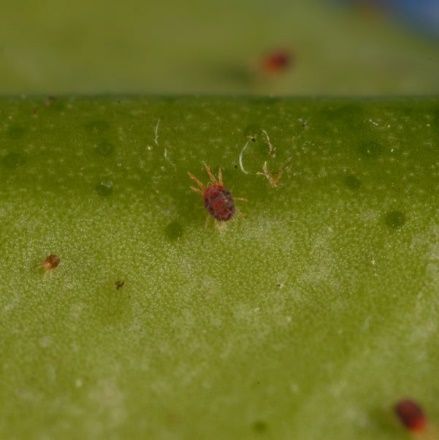
Credit: L. Buss, UF/IFAS
Citrus Red Mite Feeding Damage
- On leaves, damage is speckled and may have a silvery appearance
- Leaves and fruit may be pale in color
- Severe populations may cause leaf drop
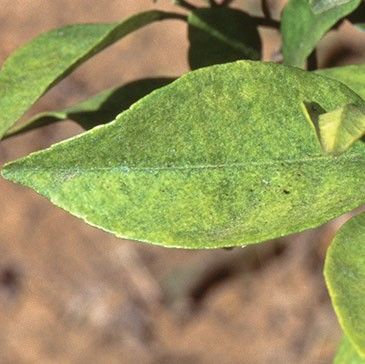
Credit: D. Rosen, University of California
Two Spotted Spider Mite Identification
- Oval shaped with two dark spots
- Male is brown to orange in color; the female color is typically pale green, but may have a yellow, brown or orange look
- Approximately 0.4 mm
- Female is larger than male, male has a pointed abdomen
- Prefers underside of leaves
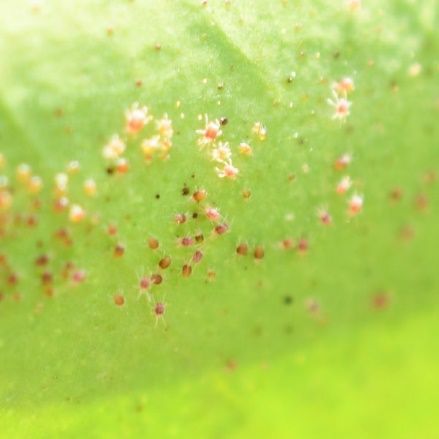
Credit: T. R. Weeks, UF/IFAS
Two Spotted Spider Mite Feeding Damage
- Leaves appear gray or yellow
- Between leaf veins, yellow or brown spots from feeding
- If infestation severe, leaf drop may occur
- Common greenhouse pest
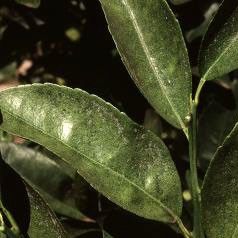
Credit: Government of Western Australia